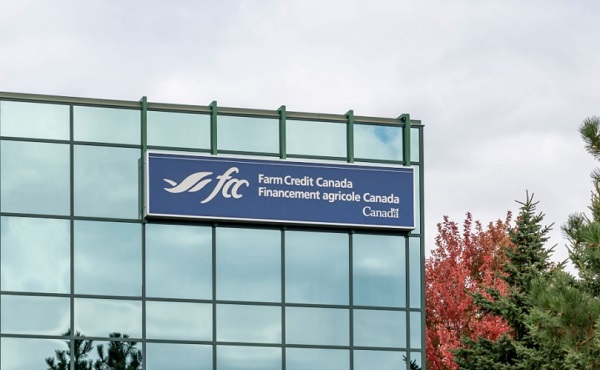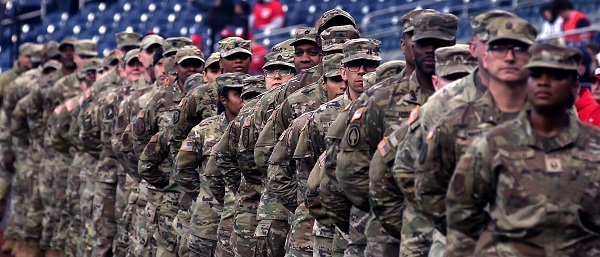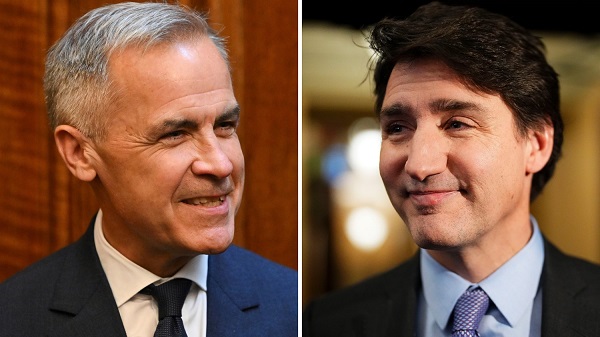Energy
Biden chose Venezuela over Canada for oil

From the MacDonald Laurier Institute
By Brian Lee Crowley
Biden is welcoming oil from one of Latin America’s most odious regimes. It’s a big win for Nicolás Maduro, but a bad deal for America and Canada
The United States needs more heavy oil for a whole series of reasons. President Joe Biden could have chosen to have that oil come from a close friend and ally, environmentally-conscious Canada, or from one of the world’s nastiest regimes, Nicolas Maduro’s Venezuela, which doesn’t give a toss about the environment. Which did he choose?
In exchange for modest concessions on electoral reform, the Biden administration just lifted sanctions on Venezuela, allowing them to export hundreds of thousands of barrels a day of vital heavy oil to the United States. The shale oil revolution has not and cannot change the fact that the US produces virtually no heavy oil, yet many of this country’s refineries, especially on the Gulf Coast, were set up to refine that kind of oil. Most of their heavy oil is from Canada, which is why that country is far and away the largest exporter of oil to America— more than twice as much as Saudi Arabia, Mexico, Russia, and Colombia combined. If America is now a net exporter of oil, it can thank Canada.
The war in Ukraine caused unpopular price hikes at the gas pump. In response, the Biden administration has drawn down the Strategic Petroleum Reserve (SPR). That drawdown focused on medium and heavy crudes. OPEC responded with supply cuts aimed at throttling the supply of these strategically important crudes.
The drawdown of the SPR is reaching its limits but the risk of higher gas prices in an election year is rising. To OPEC and Ukraine, we must now add the heightened risk of conflict spreading in the Middle East.
In this context, recall that one of the very first acts President Biden took on reaching office was to cancel the permit for the Keystone XL (KXL) pipeline, a permit issued by his predecessor. Keystone XL was intended to provide 830,000 barrels a day of Canadian heavy crude to those Gulf Coast refineries. Pipe was already being laid.
Had President Biden allowed KXL to proceed, the supply of heavy oil to the US industry would have been secure, risky drawdowns of the SPR unnecessary and America would have been much less vulnerable to global supply disruptions and OPEC’s manipulations.
Instead, the President colluded with a campaign to vilify oil from Alberta’s oilsands as “dirty oil.” Yes, producing Canada’s heavy oil emits greenhouse gases. But then all heavy oil is GHG intensive, and Venezuela is the highest emitting in the world.
The Canadian oil & gas sector has invested heavily and successfully in emissions reductions. The industry has a $75 billion plan to decarbonize and achieve net zero by 2050, focused on carbon capture and storage and small modular nuclear reactors.
Venezuela has done nada in terms of real improvement in the environmental footprint of its heavy oil production. What it does have is a regime that is world-leading in terms of its human rights abuses and the damage it has inflicted on a once-prosperous economy. Every dollar America spends on Venezuelan oil will prop up one of the most violent and repressive regimes in the Americas, where Amnesty International says in 2022:
The security forces responded with excessive force and other repressive measures to protests…to demand economic and social rights, including the right to water. Impunity for ongoing extrajudicial executions by the security forces persisted. Intelligence services and other security forces, with the acquiescence of the judicial system, continued to arbitrarily detain, torture, and otherwise ill-treat those perceived to be opponents of the government of Nicolás Maduro.
A recent UN Fact Finding Mission to Venezuela talked about the “unremitting human rights crisis” and patterns of crimes against humanity in that country. Nearly 8 million Venezuelans are estimated to have fled the economic and humanitarian crisis there.
Meanwhile, Canada, while not perfect, has robust human rights protections and high environmental standards. It is also a magnet for immigrants (including tens of thousands of Venezuelans), having one of the highest shares of its population born elsewhere in any country in the world.
In 2021 President Biden was happy to offend one of America’s closest allies by blocking KXL because it was inconsistent “with my administration’s economic and climate imperatives.” Three short years later, behind the fig leaf of Venezuelan electoral reform, he is welcoming much more environmentally damaging oil from one of Latin America’s most odious regimes, all to try and keep the price down at the pump. That’s a big win for Nicolás Maduro, but a bad deal for America and Canada.
Brian Lee Crowley is the Managing Director of the Center for North American Prosperity and Security (www.cnaps.org).
Alberta
Carney government’s anti-oil sentiment no longer in doubt

From the Fraser Institute
The Carney government, which on Monday survived a confidence vote in Parliament by the skin of its teeth, recently released a “second tranche of nation-building projects” blessed by the Major Projects Office. To have a chance to survive Canada’s otherwise oppressive regulatory gauntlet, projects must get on this Caesar-like-thumbs-up-thumbs-down list.
The first tranche of major projects released in September included no new oil pipelines but pertained largely to natural gas, nuclear power, mineral production, etc. The absence of proposed oil pipelines was not surprising, as Ottawa’s regulatory barricade on oil production means no sane private company would propose such a project. (The first tranche carries a price tag of $60 billion in government/private-sector spending.)
Now, the second tranche of projects also includes not a whiff of support for oil production, transport and export to non-U.S. markets. Again, not surprising as the prime minister has done nothing to lift the existing regulatory blockade on oil transport out of Alberta.
So, what’s on the latest list?
There’s a “conservation corridor” for British Columbia and Yukon; more LNG projects (both in B.C.); more mineral projects (nickel, graphite, tungsten—all electric vehicle battery constituents); and still more transmission for “clean energy”—again, mostly in B.C. And Nunavut comes out ahead with a new hydro project to power Iqaluit. (The second tranche carries a price tag of $58 billion in government/private-sector spending.)
No doubt many of these projects are worthy endeavours that shouldn’t require the imprimatur of the “Major Projects Office” to see the light of day, and merit development in the old-fashioned Canadian process where private-sector firms propose a project to Canada’s environmental regulators, get necessary and sufficient safety approval, and then build things.
However, new pipeline projects from Alberta would also easily stand on their own feet in that older regulatory regime based on necessary and sufficient safety approval, without the Carney government additionally deciding what is—or is not—important to the government, as opposed to the market, and without provincial governments and First Nations erecting endless barriers.
Regardless of how you value the various projects on the first two tranches, the second tranche makes it crystal clear (if it wasn’t already) that the Carney government will follow (or double down) on the Trudeau government’s plan to constrain oil production in Canada, particularly products derived from Alberta’s oilsands. There’s nary a mention that these products even exist in the government’s latest announcement, despite the fact that the oilsands are the world’s fourth-largest proven reserve of oil. This comes on the heels on the Carney government’s first proposed budget, which also reified the government’s fixation to extinguish greenhouse gas emissions in Canada, continue on the path to “net-zero 2050” and retain Canada’s all-EV new car future beginning in 2036.
It’s clear, at this point, that the Carney government is committed to the policies of the previous Liberal government, has little interest in harnessing the economic value of Canada’s oil holdings nor the potential global influence Canada might exert by exporting its oil products to Asia, Europe and other points abroad. This policy fixation will come at a significant cost to future generations of Canadians.
Energy
Carney bets on LNG, Alberta doubles down on oil

This article supplied by Troy Media.
Carney is promoting LNG as Canada’s future. Alberta insists the future still runs through oil
Prime Minister Mark Carney is a man in a hurry. He’s fast-tracking energy megaprojects to position Canada as a global LNG powerhouse, but Alberta’s oil ambitions and the private sector’s U.S. focus could throw his plan off course.
It’s all part of a broader federal strategy to reframe Canada’s energy priorities and show that his government is delivering economic results. Some say the motivation is political, with a fragile minority government and the potential for a snap election.
Others say it’s about legacy: Carney wants to be remembered as the prime minister who put Canada back on the global energy map.
That ambition came into sharper focus last week. On Thursday, he announced a second wave of projects being sent to the federal Major Projects Office, a body set up to fast-track infrastructure Ottawa sees as vital to national priorities.
The new list includes the Ksi Lisims liquefied natural gas project and the North Coast Transmission Line in British Columbia, along with a hydroelectric project in Nunavut. It also features nickel, graphite and tungsten mines in Ontario, Quebec and New Brunswick.
Ksi Lisims is the second LNG project Ottawa has submitted to the Major Projects Office.
Carney’s goal is clear, according to Lisa Baiton, president of the Canadian Association of Petroleum Producers. “With Ksi Lisims LNG and the related Prince Rupert Gas Transmission project joining LNG Canada Phase 2 on the major projects list, paired with Cedar and Woodfibre LNG, which are already under construction, Canada is on a path to become one of the top five LNG exporters in the world,” she said in a statement.
But not everyone is on the same page, especially Alberta.
The first batch of fast-tracked projects, announced two months ago, included a Montreal port expansion, a small modular nuclear plant in Ontario, mining projects in Saskatchewan and British Columbia, and LNG Canada Phase 2.
Alberta’s proposed oil export pipeline project was on neither list.
Premier Danielle Smith had said she hoped an agreement with Ottawa would be finalized by early last week to allow a new bitumen pipeline to proceed. That didn’t happen. But in a statement last Wednesday, her office said “sensitive” negotiations are continuing.
“Currently, we are working on a (memorandum of understanding) agreement with the federal government that includes the removal, carveout or overhaul of several damaging laws chasing away private investment in our energy sector, and an agreement to work towards ultimate approval of a bitumen pipeline to Asian markets,” the statement said.
Alberta argues such pipelines are critical if Canada is serious about energy diversification and global exports, particularly to Asia, where demand is rising. So far, those arguments don’t appear to have moved Carney.
With no federal deal in place, the industry is moving ahead with its own export agenda by doubling down on the U.S. market.
Enbridge has approved $1.4 billion in upgrades to its Mainline and Flanagan South pipelines, adding 250,000 barrels per day of capacity to move Canadian crude to the U.S. Midwest and Gulf Coast. The expansion is expected to come online in 2027.
The company also plans to test commercial demand in 2026 for a second phase of Mainline expansion that could add another 250,000 barrels per day.
Colin Gruending, Enbridge’s president of liquids pipelines, said the U.S. remains the most logical export market for Canadian oil, followed by Asia via the West Coast. The federal government’s goal of reducing reliance on U.S. buyers may take time.
Trans Mountain Corp., which moves oil sands crude to the Vancouver area for export, is reportedly also considering ways to increase volumes quickly and affordably.
Keystone XL, the pipeline project killed by former U.S. president Joe Biden in 2021, may also be back in play. The existing Keystone system, now owned by South Bow Corp., moves Canadian oil to U.S. Gulf Coast refineries. The cancelled XL expansion would have added new pipe and a more direct route south.
Whether Carney’s push makes Canada an LNG superpower or hits a wall of regional resistance and market reality, the energy and political maps are shifting.
Toronto-based Rashid Husain Syed is a highly regarded analyst specializing in energy and politics, particularly in the Middle East. In addition to his contributions to local and international newspapers, Rashid frequently lends his expertise as a speaker at global conferences. Organizations such as the Department of Energy in Washington and the International Energy Agency in Paris have sought his insights on global energy matters.
Troy Media empowers Canadian community news outlets by providing independent, insightful analysis and commentary. Our mission is to support local media in helping Canadians stay informed and engaged by delivering reliable content that strengthens community connections and deepens understanding across the country.
-

 Agriculture2 days ago
Agriculture2 days agoFederal cabinet calls for Canadian bank used primarily by white farmers to be more diverse
-

 Indigenous15 hours ago
Indigenous15 hours agoTop constitutional lawyer slams Indigenous land ruling as threat to Canadian property rights
-

 Daily Caller2 days ago
Daily Caller2 days ago‘Holy Sh*t!’: Podcaster Aghast As Charlie Kirk’s Security Leader Reads Texts He Allegedly Sent University Police
-

 Daily Caller14 hours ago
Daily Caller14 hours agoDemocrats Explicitly Tell Spy Agencies, Military To Disobey Trump
-

 Addictions1 day ago
Addictions1 day agoActivists Claim Dealers Can Fix Canada’s Drug Problem
-

 Business21 hours ago
Business21 hours agoClimate Climbdown: Sacrificing the Canadian Economy for Net-Zero Goals Others Are Abandoning
-

 Alberta2 days ago
Alberta2 days agoSylvan Lake football coach fired for opposing transgender ideology elected to town council
-

 Business18 hours ago
Business18 hours agoNearly One-Quarter of Consumer-Goods Firms Preparing to Exit Canada, Industry CEO Warns Parliament











